Best
Beginner Tenor Saxophone
-
Overall: Quality crafted in Yamaha’s state-of-the-art production facilities
-
Best Feature: Post-to-body construction: yellow brass body and keys
-
TedScore™: 9/10
Best
Beginner Alto Saxophone
-
Overall: Beautiful Look And Rich Tone With A Gold Lacquer Finish
-
Best Feature: Includes case & high-quality 4C mouthpiece
-
TedScore™: 9/10
Best
Beginner
Baritone
Saxophone
-
Overall: Gold-lacquered brass body and neck
-
Best Feature: Includes mouthpiece, ligature, and wood-frame case with wheels
-
TedScore™: 8/10
Are you wondering what is the best age to start learning saxophone?
Well, starting to play the sax is not just about music lessons; it’s about joining a long-standing tradition that can wail, soothe, and set toes tapping!
In my experience with playing the sax, I’ve learned that the best time to start is when the saxophone begins feeling like a buddy you want to chat with rather than a strange thing.

Usually, kids get the hang of the sax around nine to eleven because they’re physically ready to handle it.
But the real key? Passion!
Whenever you feel that strong urge to play, that’s the perfect time to start, regardless of age.
If these words have piqued your interest, keep reading. This article is your special ticket to learning when and how to bring the saxophone into your world.
The Best Age to Start Learning
Factors to Consider
Determining the right age to pick up the saxophone is about striking the right chord between enthusiasm and ability.
Let me waltz you through the main points to ponder before your child embarks on their musical journey.
Physical Readiness
The saxophone isn’t a one-size-fits-all instrument, so physical readiness is a tune you can’t ignore. Children often have the necessary lung capacity and finger span to start playing around eight or nine.
Emotional and Cognitive Development
Now, let’s talk about the heart of the matter—emotional and cognitive development. For mastering the sax, students need a good dollop of concentration and the ability to stay as cool as a cucumber during practice.
Accessories and Instrument Sizes
Lastly, remember the bells, whistles, accessories, and instrument sizes. It’s essential to match the right saxophone size to the student’s age and stature to avoid a cacophony of discomfort.

Developing a Practice Routine
When I first picked up the saxophone, I quickly learned that having a solid practice routine was crucial to my progress. It’s like having a map for a treasure hunt, leading you directly to the prize of musical mastery.
Creating a Fun and Effective Environment
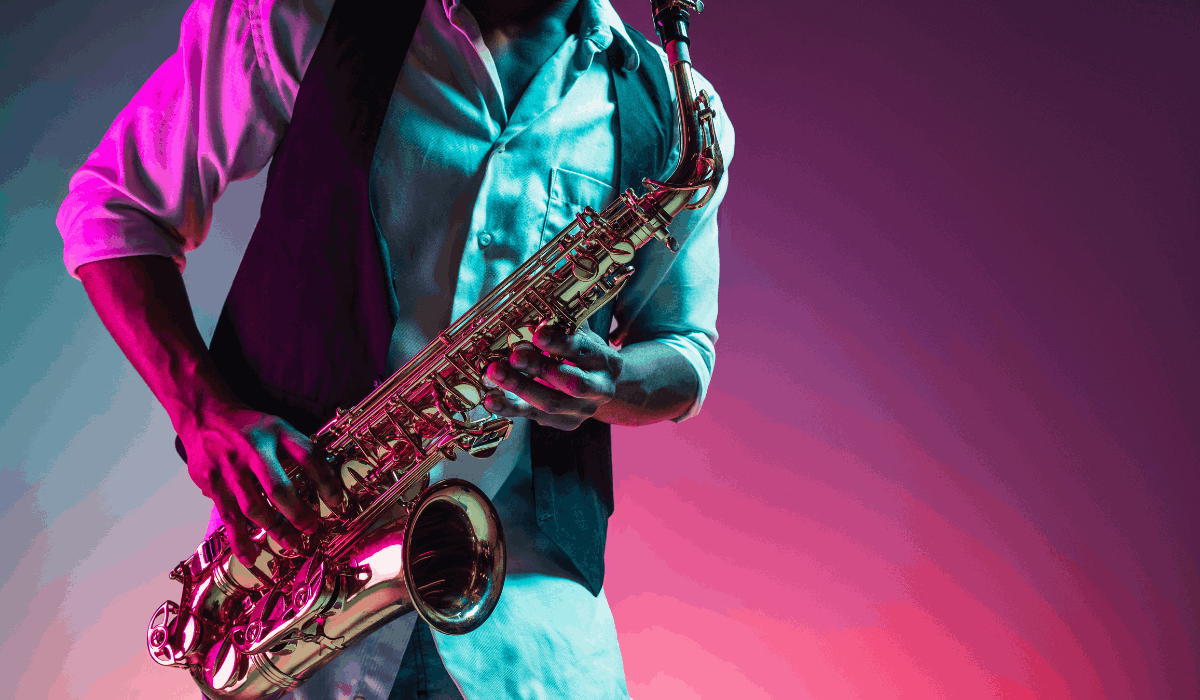
I always make sure my practice space is inviting. A cluttered room leads to a cluttered mind, and that’s no good for learning.
Creating the right mood is essential for an engaging session. I mix it up with background tracks that fit my mood for the day, whether jazz classics or upbeat contemporary numbers.
Variety keeps my practice fun and effective, warding off any hint of monotony.
Overcoming Challenges and Common Mistakes
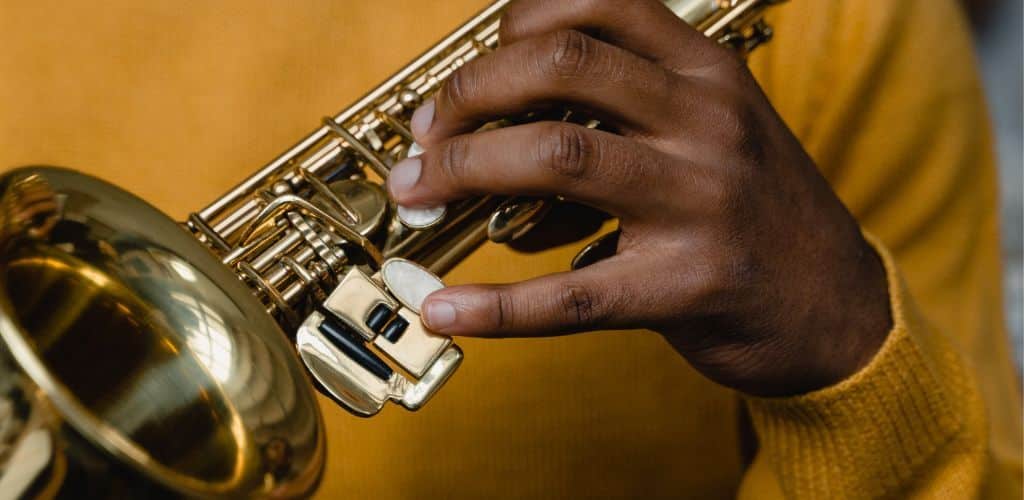
Let’s face it—we all trip over a mistake or two, but I find that bumbling teaches us best. I tackle the trickiest scales first because that’s when my concentration is sharpest, gradually turning my weaknesses into strengths.
The key is patience and discipline, though it’s easier said than done. Still, I set achievable goals for each session. Focusing on incremental improvements, I dodge the frustration of trying to conquer Rome in a day.
And for every goal met a little reward: perhaps an extra break or a tasty treat.
Resources for Saxophone Learning
Learning the saxophone is a super exciting musical journey! I want to ensure you have the best resources to make your experience delightful and smooth.
Finding the Right Teacher

Now, finding a top-notch saxophone teacher is like hitting the jackpot.
They not only guide you through the basics but can also become your mentor.
Search for a local music shop or check out community boards.
Many teachers offer saxophone lessons, which is brilliant for flexibility and comfort.
Self-Learning: Books and Online Tutorials

There are plenty of books that serve as a complete guide for beginners.
Look for titles with high ratings and reviews to ensure you’re getting the cream of the crop.
When you lean towards the digital spectrum, YouTube can be your treasure trove.
Countless tutorials from experienced saxophonists make learning the saxophone look like a breeze.
Understanding the Saxophone and Its Types
Let’s acquaint ourselves with the different types available and their characteristics. Each type suits different body sizes and levels of experience.
Alto Saxophone

The alto sax is a staple in the sax family and is a fantastic starting point for budding musicians. It’s sized perfectly for young learners and is usually recommended for ages nine to eleven.
Its relatively smaller size and lighter weight compared to tenor or baritone saxophones make it manageable for children. The alto’s ergonomic design helps beginners focus on technique without battling an oversized instrument.
Yamaha YAS280 Student Alto Saxophone

PERFECT FOR: Student saxophone players
FEATURES: Beautiful look and rich tone with a gold lacquer finish
OTHER INFO: Easier response from lower notes with the improved, stronger B-C# mechanism
Yamaha YAS280 Student Alto Saxophone
- Register for a 5-year extended warranty and 3-month Tomplay Premium
- Includes case & high-quality 4C mouthpiece
- Yamaha quality creates the best student saxophone
- You might want to upgrade as you advance your playing skills
When you click ‘Check Price’, you’ll see there are loads of great places to buy this item. Our personal favorite is Sweetwater for the US, and Thomann and Gear4Music for the UK & Europe.
They are the largest music retailers, with excellent customer service, competitive prices, really fast shipping, and the longest guarantees.
The professional musician who wrote this article combined many things,
from the product build, manufacturer’s reputation through to feedback
from other users, to create our famous TedScore™.
Soprano Saxophone
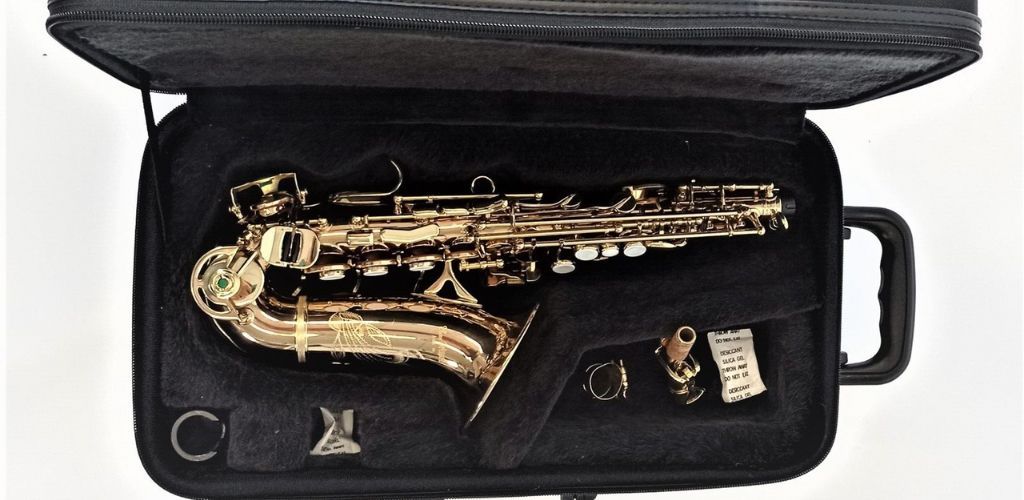
The soprano saxophone is a straight saxophone known for its bright and clear sound and is typically used in classical, jazz, and contemporary music genres. It is the third smallest member of the saxophone family, known for its distinctive and expressive tone.
Conn-Selmer DSS180 Avant Soprano Saxophone, Curved

PERFECT FOR: Intermediate and advancing players
FEATURES: Has a beautiful clear lacquer finish with an engraved bell
OTHER INFO: Designed with gold brass to produce a silky smooth tone
Conn-Selmer DSS180 Avant Soprano Saxophone, Curved
- Comes with a quality lightweight case
- Includes a professional Rousseau mouthpiece
- Text
When you click ‘Check Price’, you’ll see there are loads of great places to buy this item. Our personal favorite is Sweetwater for the US, and Thomann and Gear4Music for the UK & Europe.
They are the largest music retailers, with excellent customer service, competitive prices, really fast shipping, and the longest guarantees.
The professional musician who wrote this article combined many things,
from the product build, manufacturer’s reputation through to feedback
from other users, to create our famous TedScore™.
Tenor and Baritone Saxophones
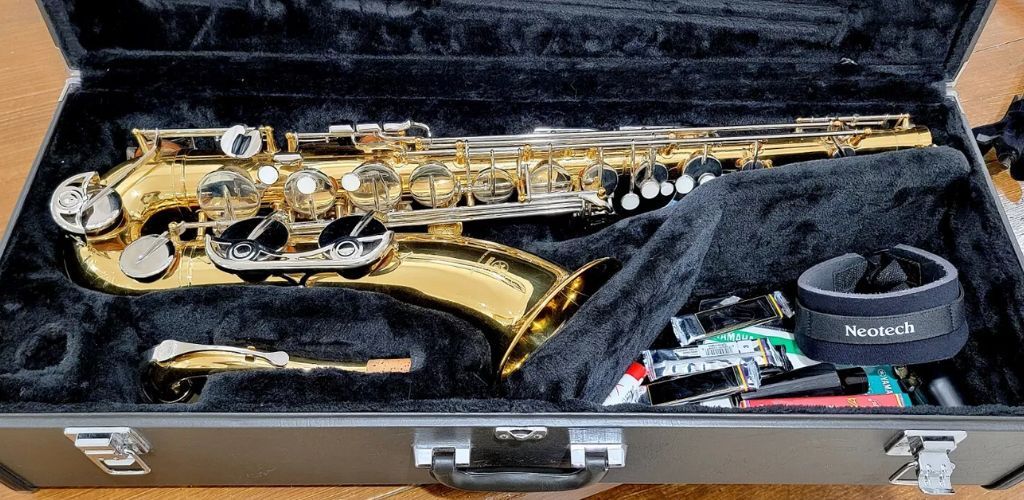
Now, the tenor sax has a deeper voice than the alto, and while it’s also popular due to its size, it’s generally better suited for slightly older children and adults.
Yamaha YTS-26 Student Tenor Saxophone
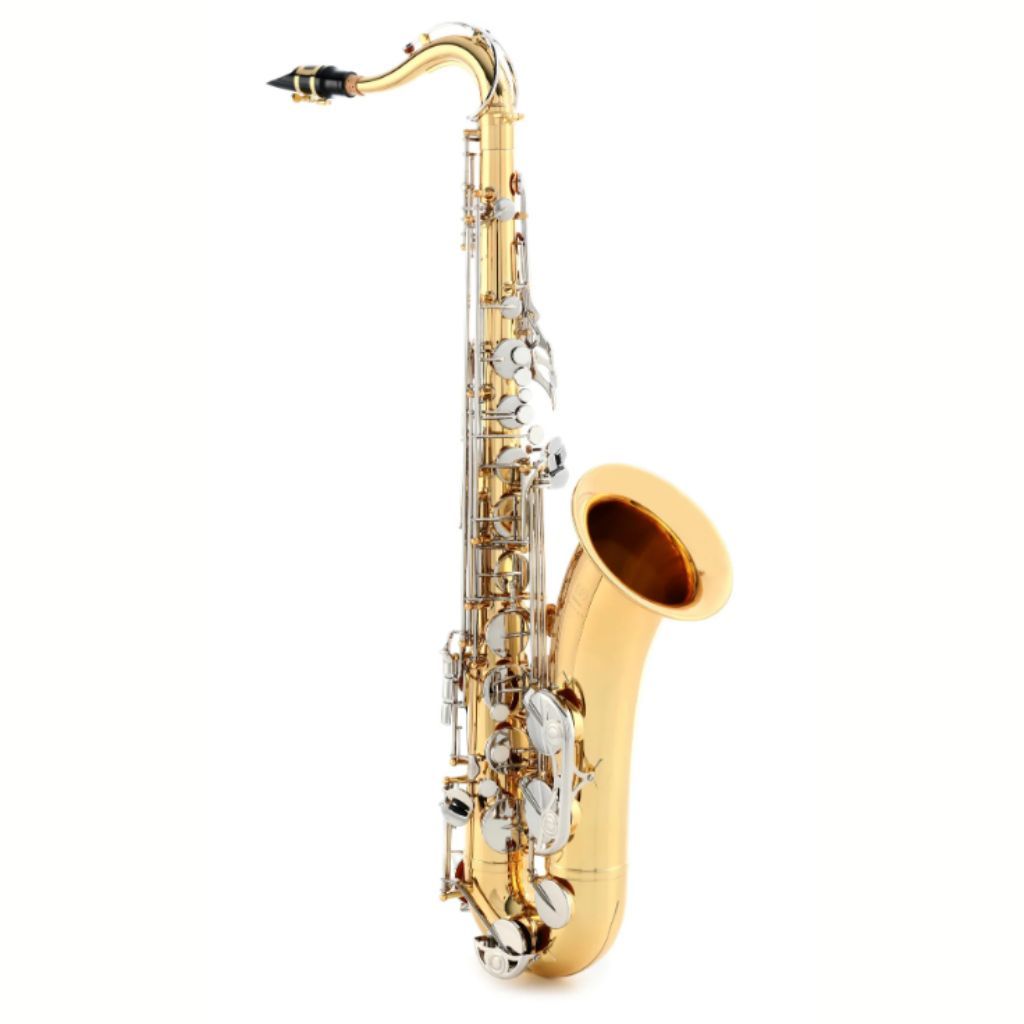
FEATURES: Quality crafted in Yamaha’s state-of-the-art production facilities
OTHER INFO: Post-to-body construction: yellow brass body and keys
- Keys are nickel-plated for durability and wear resistance.
- It is relatively expensive compared to other student tenor saxophone options
When you click ‘Check Price’, you’ll see there are loads of great places to buy this item. Our personal favorite is Sweetwater for the US, and Thomann and Gear4Music for the UK & Europe.
They are the largest music retailers, with excellent customer service, competitive prices, really fast shipping, and the longest guarantees.
The professional musician who wrote this article combined many things,
from the product build, manufacturer’s reputation through to feedback
from other users, to create our famous TedScore™.
Jupiter JBS1000 Student Baritone Saxophone

FEATURES: Gold-lacquered brass body and neck
OTHER INFO: Adjustable-height palm keys and plastic thumb rest
- Includes mouthpiece, ligature, and wood-frame case with wheels.
- Larger size and weight may make it less portable.
When you click ‘Check Price’, you’ll see there are loads of great places to buy this item. Our personal favorite is Sweetwater for the US, and Thomann and Gear4Music for the UK & Europe.
They are the largest music retailers, with excellent customer service, competitive prices, really fast shipping, and the longest guarantees.
The professional musician who wrote this article combined many things,
from the product build, manufacturer’s reputation through to feedback
from other users, to create our famous TedScore™.
Both require more lung capacity and physical strength to play, so they’re more commonly picked up after some experience on the alto or as one’s physicality allows.
The Alphasax and Saxophones for Children
The Alphasax is a game-changer for younger kids itching to get their hands on a sax. It’s designed specifically for small beginners, lightening the weight and simplifying key work to make it more accessible.
As for the best saxophone for kids, a soprano might seem an obvious choice due to its small size, but it’s pretty challenging to play. Youngsters usually fare better starting with the alto or the Alphasax due to their more forgiving nature regarding technique and control.
Thomann Little Bee Kids Saxophone
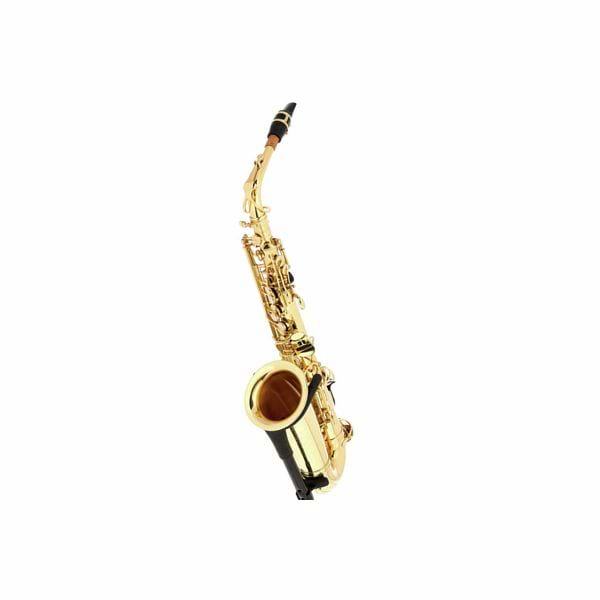
FEATURES: The neck shape is taken from the tenor saxophone
OTHER INFO: Brass keys and body
- Includes light case with backpack straps, basic mouthpiece, and accessories
- Ideal starter sax for children only
When you click ‘Check Price’, you’ll see there are loads of great places to buy this item. Our personal favorite is Sweetwater for the US, and Thomann and Gear4Music for the UK & Europe.
They are the largest music retailers, with excellent customer service, competitive prices, really fast shipping, and the longest guarantees.
The professional musician who wrote this article combined many things,
from the product build, manufacturer’s reputation through to feedback
from other users, to create our famous TedScore™.
What is the Best Age to Start Learning Saxophone:
Our Professional Insight
Reflecting on the journey to mastering the saxophone, it’s clear that passion trumps age. I’ve seen energetic five-year-olds and vibrant individuals well into their 80s fall in love with the instrument.
The saxophone doesn’t discriminate; it joyfully welcomes all eager to learn.
For younger students, between nine and eleven seems the sweet spot. But hey, if you’re seven or eight and feeling keen, who am I to halt your dreams?
Remember, though, the alto saxophone’s weight—that’s your mountain to climb, little ones.

And to the adults pondering if the train of musical adventure has passed them by—think again! Your age is but a number, not a barrier.
So, whether you’re considering a soprano or an alto, remember this is about your journey, your rhythm. The best time to start? When your heart says, “Let’s jazz things up a bit!”
Isn’t that what life’s all about? Let’s keep the music playing, no matter the years behind us.
Wait! There’s more…
Check out this comprehensive guide on saxophones for beginners to kickstart your musical journey.
FAQ's
Learning the saxophone can vary for everyone, but with regular practice and dedication, many people feel comfortable playing simple tunes within a few months. However, mastering the saxophone and playing more complex pieces can take several years of consistent practice and learning.
Playing sax can be challenging due to the instrument’s unique embouchure and fingering techniques. With dedication, practice, and proper instruction, many people find learning rewarding and enjoyable.
Learning every possible woodwind instruments, including the saxophone, is always possible. Many people have successfully started learning the saxophone in their 40s and beyond and have found it fulfilling and enjoyable. With dedication and consistent practice, age should help to learn and master the saxophone.
A 50-year-old can learn to play the saxophone. Age is not a limiting factor when learning a musical instrument. With dedication, practice, and the right instruction, anyone can successfully learn to play the saxophone and enjoy making music regardless of age.


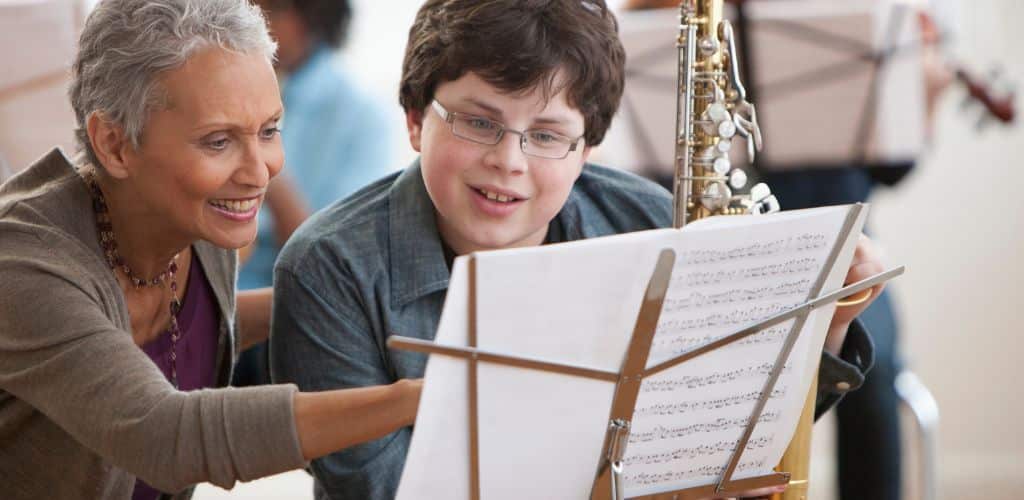








As a parent trying to navigate the complex world of music education for my 10-year-old, this article was a breath of fresh air. I’m particularly interested in understanding more about the emotional and cognitive development aspects related to learning the saxophone. How do I gauge if my child is genuinely ready beyond just showing interest? Any advice or signs to look for would be incredibly helpful. Thanks!
honestly, i always thought you gotta be old enough to have lungs the size of balloons to play sax. reading the bit on accessories and right sizing totally changed my view. theres a sax out there for everyone, huh? wicked cool.
so what age do you think is the best to start then? got a nephew who’s interested.
Absolutely, jazzyJeff87. Saxophone sizing and accessories are designed to accommodate players of all ages and sizes. Glad you found the section enlightening!
I deeply appreciate the section on developing a practice routine. It’s been a game-changer for keeping me motivated. Sharing these insights with my bandmates!
Hey Guy Passey, super pumped to start my sax journey! Quick q: what’s the smallest sax I can start with? I’m kinda small myself lol. Thanks, man!